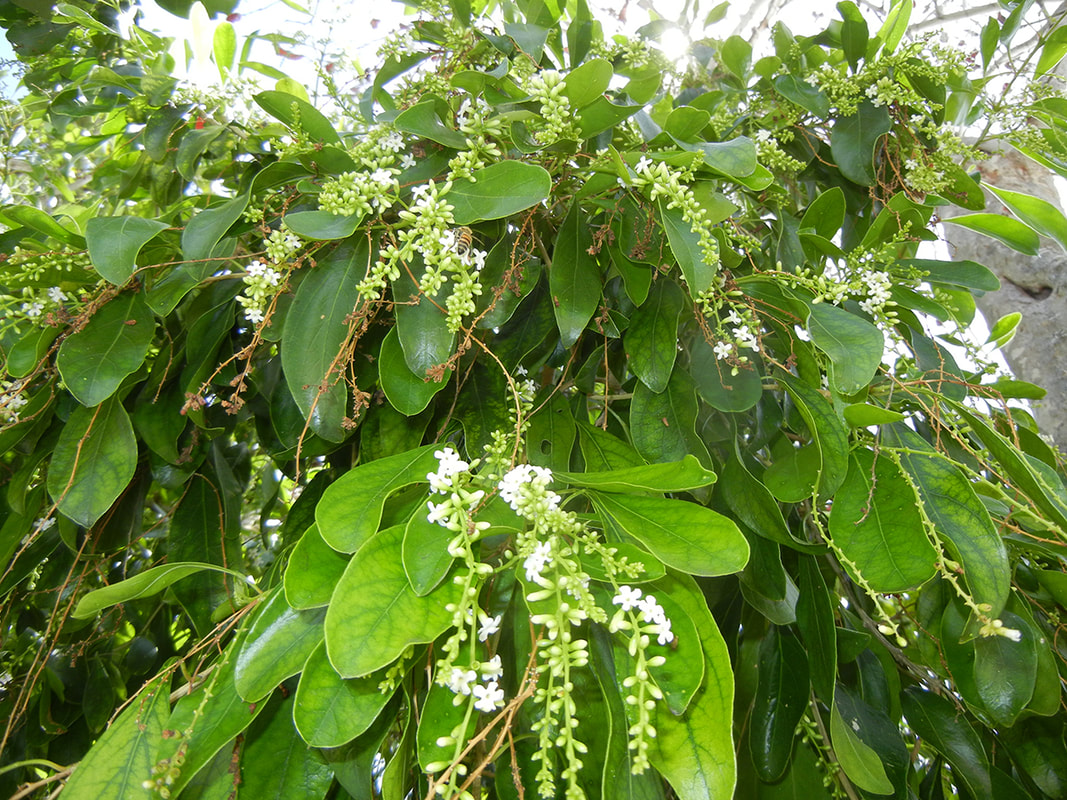Fiddlewood
Citharexylum spinosum
Citharexylum spinosum

Fiddlewood, Citharexylum spinosum, happens to be one of my favorite Florida native shrubs. The way the flowers are aligned to form an inflorescence, contrasted with the shiny, dark green leaves, creates something that could easily blend into the background but is immediately recognizable once you are familiar with it.
Naturally, the species can reach up to 35 feet, but is typically maintained as a mid-sized shrub in landscaping. The largest known specimen resides in Dade County!
Citharexylum spinosum is native to Florida, the West Indies and South America, and is hardy through zone 10 and 11. In these zones, it can be planted year round. It grows relatively slowly.
Like mentioned above, fiddlewood typically grows 15 to 35 feet tall, with a spread of 8 to 25 feet. It prefers partial sun and does well in a range of soil types. Fiddlewood has been shown to be affected by whitefly. This can be solved by spraying a mix of liquid dish soap and water on the foliage of infected plants daily. Fiddlewood is also a host to the fiddlewood leaf roller moth--- this sucker often defoliates the leaves, but does not kill the plant. To learn more about the moth, read this article here!
By: Maya Frere
Naturally, the species can reach up to 35 feet, but is typically maintained as a mid-sized shrub in landscaping. The largest known specimen resides in Dade County!
Citharexylum spinosum is native to Florida, the West Indies and South America, and is hardy through zone 10 and 11. In these zones, it can be planted year round. It grows relatively slowly.
Like mentioned above, fiddlewood typically grows 15 to 35 feet tall, with a spread of 8 to 25 feet. It prefers partial sun and does well in a range of soil types. Fiddlewood has been shown to be affected by whitefly. This can be solved by spraying a mix of liquid dish soap and water on the foliage of infected plants daily. Fiddlewood is also a host to the fiddlewood leaf roller moth--- this sucker often defoliates the leaves, but does not kill the plant. To learn more about the moth, read this article here!
By: Maya Frere
